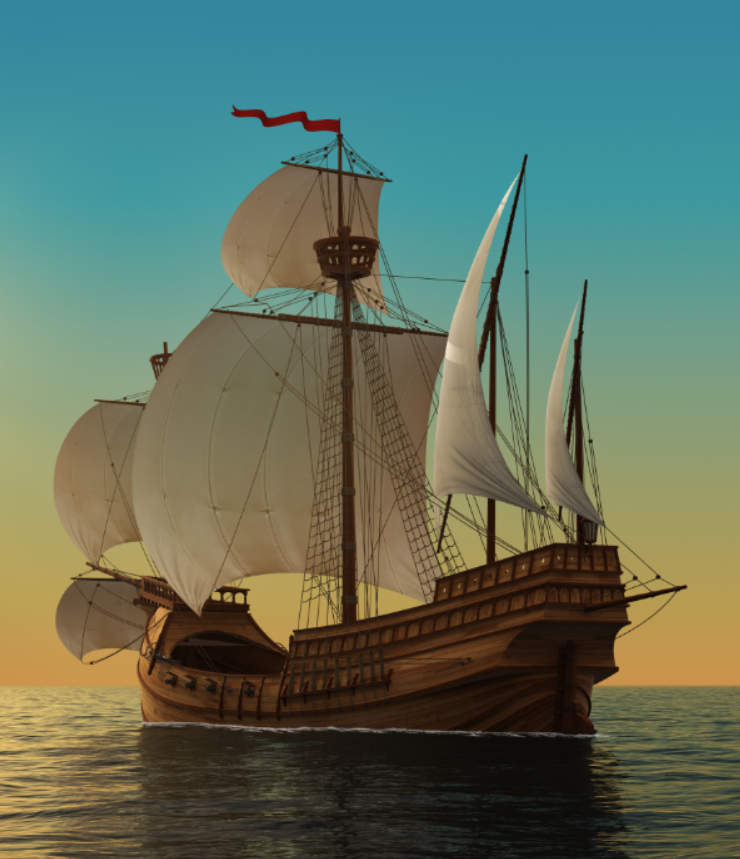- UNITS
- Unit 3 - Consulato del Mare
- The Game of Words
- Prof. Quinn and Paul's Conversation
- Eloquence
- Latin Phrases
- Language Knots
- Test Corner
- LEARNING

♦ This introductory exercise aims to give you a feel for the sound and rhythm of the language, whilst presenting an overview of the maritime topic at hand. ♦ By reading and then listening to the accompanying audio, you’ll discover how words are pronounced and some simple sentence structures. ♦ Once you are comfortable with how the written and spoken words are connected, you’ll be ready to focus on keywords in the next exercise.
Consulato del Mare
After its fall, Europe didn’t see another empire like that of the Romans for another thousand years, and the development of maritime law reflected this. In the first half of the second millennium, maritime law was created mainly by cities to better allow trade.
Maritime legal documents were issued by port cities like Arles (1150 AD), Marseille (1162), Genoa (1186), the Peloponnese peninsula (Morea) (1200), Venice (1205 and 1255), Aragon (1270 and 1340), Barcelona (1258), Hamburg (1301-06, 1497), Danzig (1429), Reval (1482) and Lübeck (1537). Many of these legal codes were influenced by the Rhodian Sea Laws and other ancient sources. These laws directed captains, ship owners, crew, and merchants in their maritime activities. Often these citizens had to take an official annual promise to keep the laws.
One of the most important early-modern maritime law books was the Catalonian Consulato del Mare, or ‘Consulate of the Sea’, which was drawn up in Barcelona in the 1300s, but was first printed in 1494. The book was split into two parts. The first contained codes for judges to follow, old customs and rules of the sea, and rules for crews and owners of warships. These detailed accepted way to approach the organisation and economy of ships, events like ransoms, capturing or salvaging other ships, jettisoning equipment, and prizes found at sea. The second part held past rulings from kings and councillors.
In the 1500s, the Consulato del Mare was translated into many European languages and it became a well-respected code throughout the continent. It was so successful because it brought together all the best of the old Roman, Greek, Byzantine, Italian, French, and Spanish maritime laws into one document. There is a theory that these ancient rules were collected in the times of the crusades, which involved leaders from all around Europe.
The Consulato del Mare went on to form the basis of the marine laws of Italy, Spain, France and England. Modern-day commentators find that the document doesn’t have a sufficiently clear structure and system, and that some of its rules can be too harsh on certain parties. That said, these commentators also find the book to have good common sense and to be equitable in its contract decisions. Overall, it’s seen as a document that was more civilised than its time.
There were two other major developments in maritime law in this period that were more centred on Northern Europe. These were the Wisby Sea Law in the fifteenth century, and the Sea Law of the Hanseatic League, which started building up from the 14th century and was codified into one document in 1614. The Wisby Sea Law was formed by the wealthy merchant island of Gotland in the centre of the Baltic Sea. The Hanseatic Sea Law was all-important for the cities of the Hanseatic League to trade with each other effectively and efficiently. Having a common maritime law helped keep this confederation of cities together for several centuries.
